By Janet Robinson. Photographs by Paul Robinson. Published on Egyptological. Journal, Edition 7, 4th December 2013.
Abstract
Janet Robinson’s project Vernacular Voices is about ancient people living, travelling and most importantly communicating in writing in the Egyptian desert.
Vernacular Voices I, published on Egyptological in May 2012 (http://egyptological.com/2012/05/31/vernacular-voices-8902), introduced a Romano-Egyptian called Phopis resting in a shady spot at Hans Winkler’s site RME21 (Robert Mond Expedition) in Wadi Qash. Vernacular Voices II discusses some hitherto unpublished graffiti signatures set in full sun at the celebrated ‘lost’ Hans Winkler rock-shelter RME18 which is also in Wadi Qash near the Roman garrisons of Krokodilo (see, for example, the Trismegistos project (www.trismegistos.org) and Didymoi (see the Didymoi project at http://ifao.egnet.net/bases/publications/fifao67/). Site RME18 displays numerous drawings from all periods and it is likely that nearby wadi trails were well-used long before Roman times. Despite this, there is a paucity of evidence for Romans travelling or living in Wadi Qash.
Introduction
The Vernacular Voices project is about ancient people living, travelling and communicating in writing in the Egyptian desert. Vernacular Voices II discusses some hitherto unpublished graffiti signatures at the celebrated ‘lost’ Hans Winkler rock-shelter RME18 (Robert Mond Expedition) in Wadi Qash near the Roman garrisons of Krokodilo and Didymoi.
During the 1930s the art historian Dr. Hans A. Winkler sponsored by Robert Mond travelled on foot in the southern Egyptian wadis copying and photographing ancient predynastic and dynastic petroglyph (rock art) sites as well as material from Ptolemaic and Roman times (Winkler 1938 – www.jstor.org/stable/41716327). Many wadis (dry river beds) drained into the Nile from the Eastern Desert offering ease of access to the mountains and over the watershed to the coast. Use by travellers, hunters and nomadic Bedu (known in classical times as Blemmyes or Bedja) is well documented in academic literature (for example, Cappers 2006; Tomber 2005; Barnard 2008:135). A trawl through the bibliography below will give the researcher an overview of many of the main experts making sense of the links between the Rome, the Red Sea, India and China (McLaughlin 2010; Seland 2010). However, for the modern researcher the internet is most useful for tracking down these scholars scattered around the world. One web enthusiast, particularly helpful in debates about the Egyptian Eastern Desert, is Adam Bülow-Jacobsen (www.igl.ku.dk/bulow/), who has commented online for many years as he, and fellow archaeologists, epigraphists and historians led by Hélène Cuvigny, (Didymoi II, http://ifao.egnet.net/bases/publications/fifao67/) made literally ground-breaking discoveries at Didymoi uncovering and editing ostraca.
Cuvigny’s team has also discussed ancient rock inscriptions and ostraca from the Eastern Desert since the late 1990s in English language journals such as Supplementum Epigraphicum Graecum (SEG) located in the Institute of Classical Studies library, Senate House London. Cuvigny published in various Bulletins de l’Institut Français d’Archéologie Orientale (BIFAO Cairo) from the late 1990s up until the present day. The output in French has been prolific and the relevant BIFAO articles can be read in the School of Oriental and African Studies (SOAS) library, University of London. There is also online information – mainly in French. Much of the information is now collated into IFAO books such as Ostraca de Krokodilo. La correspondance militaire 2005, La route de Myos Hormos 2006 and Didymoi II Les Textes 2012. Copies are held in the Egypt Exploration Society (EES) library. Cuvigny’s team also republished findings from Winkler sites RME21, 18A and 24B. Various Greek and Latin inscriptions received first publication and/or re-publication, with corrections, and usually a brief commentary in SEG. These large collaborative teams have made a remarkable and unique contribution to our understanding of Wadi Qash and the wider context of the southern Eastern Desert. Cuvigny and her team intended to publish findings from all the Graeco-Roman sites in the area. Unfortunately they appear not to have located RME18 and thus did not complete their mission.
Much effort in recent years has been put into making available online information about the geographical and societal margins of the Roman Empire. An outstanding website collating and documenting long forgotten names is Trismegistos at www.trismegistos.org/ref/about_namvars.php. Archaeologists busy excavating and surveying the remains of Roman structures are uncovering new material which shouts across the centuries. Wherever possible I have highlighted the websites of other researchers in the hope that more sites and comments may be added in the Egyptological feedback section, Trismegistos website and elsewhere. I am encouraged, for example, by the remarkable pioneering work of the Oxyrhynchus Online project by Oxford scholars who enthusiastically welcome comments, and not just from academics (www.papyrology.ox.ac.uk/POxy).
Winkler numbered his sites in the order of discovery and left his notes and photos in the Egypt Exploration Society archives, London. His reports were published in a preliminary (even field-note) form as he intended to pursue his research following World War II (see note 1). Unfortunately, events overtook his plans and he did not live to explain his sources and rationale more fully. Winkler was not alone in his curiosity about the antique Eastern Desert. Arthur Weigall (1909/2005) and others (see, for example, Abd el-Hakim and Manley 2004) had earlier also travelled and written extensively about the area.
Site RME18 in Wadi Qash
Wadi Qash is one of the more accessible routes in the southern Eastern Desert but there is little extant evidence for people travelling and living there. On the face of it Wadi Qash could provide an excellent alternative to Wadi Hammamat for traders going to and from the Nile. And, indeed, Winkler’s RME18 in Wadi Qash is situated extremely close to important Roman routes running east from Koptos (Qift), via Phoenicon, to the Red Sea port of Myos Hormos on the east coast near where the track bifurcates to run south-east to goldfields such as Gebel Shalul and Wadi Dunqash. However, RME18 is easy to miss and there is little evidence for Roman use of this excellent shelter apart from the inscriptions discussed below, unlike the masses of Greek proskynemata (prayers) adjacent to representations of the god Min in, for example, Wadi Hammamat (see Su Bayfield’s Egypt Sites photographs at http://egyptsites.wordpress.com/2010/09/14/wadi-hammamat/)
The location of east coast ports has been much disputed. During the 1990s, it was established (Peacock and Blue 2005 and see Tomber 2012) that the site of Myos Hormos is situated at modern Quseir al-Qadim. It was thus seen that Quseir was not Leukos Limen. This renders practically all earlier map references to Myos Hormos and Leukos Limen inaccurate. Map references for the port of Berenike are also now secure. The southerly road terminates at Berenike – the historical site of which was established during recent excavations by Steve Sidebotham and teams. Now that the topographical coordinates of most of the ancient ports has been established it should be possible to rethink the travelling itineraries of the Roman military and traders with reference to RME18 and Wadi Qash. The importance of these desert roads should not be underestimated because they provided access to the shipping-routes to India (for example, Sidebotham 2011).
Recent excavations at Didymoi have yielded hundreds of Roman texts written on fragments of pots (ostraca). Winkler explored the Wadi Qash and located two rock shelter sites which he numbered RME18 and RME21. Nevertheless, even with all that was going on elsewhere in the vicinity, there is very little evidence of a Roman presence at RME18 or, indeed, in Wadi Qash as a whole. Rothe (2008) found only one site with Pharaonic material and does not think that the upper wadi and the bir (well) might have been part of an alternative route between the Nile and the Red Sea. While it is possible, Rothe thinks that the southern route that some scholars propose does not have the water resources of the Wadi Hammamat route. He suggests that it seems more likely that Wadi Qash was part of a route from Wadi Hammamat to the gold fields to the south. It therefore follows that Roman RME21 should be treated separately from multi-age RME18, however easy a route Wadi Qash might seem. Russ Rothe says (Pers. Comm.): “I have followed Wadi Qash all the way to its source above a well called Bir Mueilha […] I think that the idea that Isa/Qash is an alternate route to Myos Hormos is incorrect. I’ve travelled that route all the way to the Red Sea. It’s rough and there’s not much water. More importantly there are no inscriptions.” The alternate route idea was first put forward by Lanny Bell, Janet H. Johnson and Donald Whitcomb, in The American Journal of Semitic Languages and Literatures (Vol. 43 Chicago 1984). Steve Sidebotham, the lead archaeologist at Berenike, who has explored much of the area, agrees with Rothe (Pers. Comm.). David Rohl’s Eastern Desert Survey teams (EDS, Rohl 2000) followed Winkler’s routes over a number of seasons locating most of his sites plus many new ones. Rohl and his team went to enormous trouble to find RME18. The EDS story is an epic in its own right, as people became frustrated over finding themselves in impassible side valleys and dead ends in the Wadi Qash and adjacent ancient drainage systems. No team is more experienced in knowing what is, or is not, in this region. Nearly all these fine archaeologists were searching for Predynastic and Dynastic evidence and, like Winkler’s volumes, the resultant publications are often patchy. Each may note the presence or otherwise of “Greek” inscriptions whilst failing to say what is exactly written. The original EDS survey failed to copy the inscriptions in Greek characters.
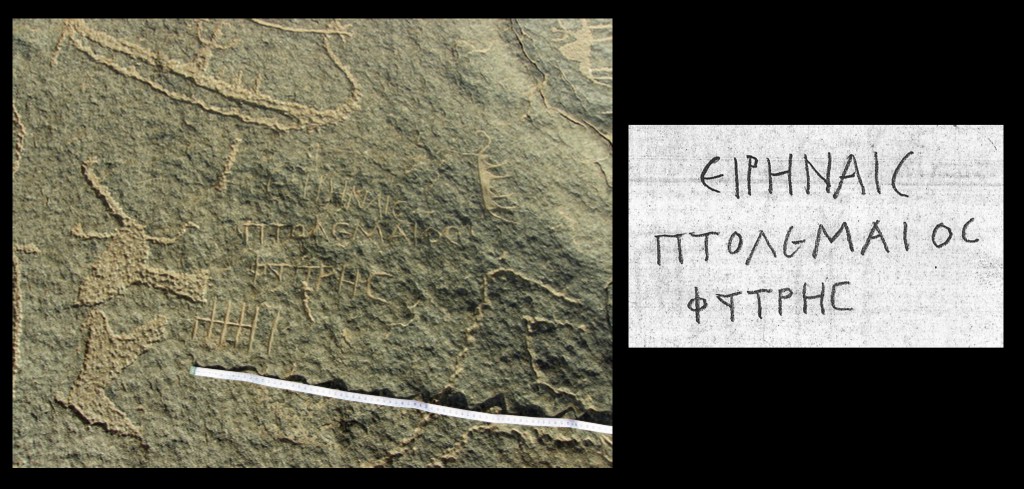
Figure 2. Left: Three Romano-Egyptian signatures. Right: Winkler’s 1938 notes. Click to see the larger image
The Inscriptions
Three names: EIPHNAIC, ∏TOΛEMAIOC, ΦATPHC (Eirenais, Ptolemaios, Phatres see Figure 2) are carved in Greek majuscule on top of the large rock which encloses a paneion for the worship of the god Min/Pan and overlooks routes through the wadi. Winkler copied the three words, assuming correctly that two of these (Eirenais and Ptolemaios) were Greek names. Winkler (1938:10) states that Greek names are common: “especially along the main roads of the Eastern Desert.” However, off the two main routes to the coast from Koptos (Qift) the Greek sites are rare treasures compared with the huge corpora of rock-art sites found by the EDS and the Rock Art Topographical Survey (RATS, Morrow and Morrow 2002).
Eirenais is a straightforward, if fairly uncommon version of the Greek name Eirenaios with the omission of omicron. The final sigma is lunate. Hrynys is its Egyptianised form. According to Roger Bagnall (Pers.Comm.) the name is fairly common in Egypt. However, Ptolemaios (see below) is attested 6187 times in the Trismegistos online database (www.trismegistos.org/ref/about_namvars.php) and Phatres has 832 citations – compared with Eirenaios which appears 337 times in Egypt. The shortened form Eirenais appears in only thirteen of the Trismegistos Eirenaios texts.
Ptolemaios is possibly the most common Macedonian name which became popular following the Ptolemaic takeover. Inscribed in neat majuscule with a final lunate sigma, it is interesting to see the name still in use several centuries later, even though Egyptian onomastic practice changed over time (Bagnall 2009).
Phatres with its rather off-axis alpha (see Figure 4) is of more interest in connection with Winkler’s brief analysis of RME18. It too has a lunar sigma. This word has a very strange and apparently un-Greek character second from the left, which could even be Phoenician (alf). Winkler’s notes proved to be deceptive and scholars were puzzled. However, on close inspection of the photographs taken by Paul Robinson on three separate visits it is possible to see that Winkler’s transcription was incorrect and his vertical descender much too long. To solve the puzzle Roger Bagnall was consulted. He says (Pers. Comm.) that off-axis characters are hardly rare in graffiti. It looks odd in Winkler’s notes, however, and it is still difficult to find parallels for the character.
My analysis had been rather thrown by Winkler’s assertion that all the names were Greek. The problem was resolved by the realisation that the word is an Egyptian name written in Greek majuscule (Preisigker 1922:457) (See note 2). Winkler was much preoccupied with the notion that illusive people known as Blemmyes were represented in the desert art of the period, although he does not seem to have considered the possibility that the ‘Greek’ names evidenced in petroglyph sites were Egyptian in origin. Winkler says (1938:4 ‘Site 1) “Cliffs in the Darb el-‘Abudi, a road coming from the north-west and joining the Qena-Quseir Road. Signs, including pentagram, swastika, and Greek letters. They belong probably to the Blemyans and are tribal marks …” Blemmyes are known from classical sources as Nubian. The academic bases for Winkler’s comments about so-called “Blemyan signs” and “Blemmyes” are shaky even though it is tempting to ascribe various inscriptions to nomadic peoples. The random names carved into rocks are more likely to be local people with a smattering of literacy from Thebes (Luxor), Koptos (Qift) or even Edfu on the Nile. Phatres (pA-Htr), on the rock at RME18, means “the twin” according to Roger Bagnall (Pers. Comm. and see also Trismegistos People for attestations). It seems strange, though, that Phatres himself and Hans Winkler both had problems with the alpha. The form Hatres (without initial pi, which is the definite article) is also common. Bagnal (Pers. Comm.) says that the name also lies behind the commonness of Didymos (same meaning) in Greek (see note 3). And, of course, the name is attached to nearby Didymoi.
At the left entrance to the shelter (beneath the rock on which the names are written) is a small enigmatic group of four Greek majuscule letters – iota, omega, sigma and chi. The four-barred sigma is interesting because it is rare in this part of the desert. Perhaps it is a signature written by a passerby. It is possible, however, that it was written in Ptolemaic rather than Roman times. It is difficult to date handwriting but help is now available thanks to the online Didymoi texts (http://ifao.egnet.net/bases/publications/fifao67/). Researchers are thus now able to compare the considerable amount of graffiti from petroglyph sites with the material from within the Roman establishment. From an epigraphic perspective the inscription four-barred sigma in ΙѠΣΧ is different from EIPHNAIC, ∏TOΛEMAIOC, and ΦATPHC (Eirenais, Ptolemaios and Phatres) and may indicate that a person passed that way in Ptolemaic times. This is interesting because it is difficult to recall a parallel in any of the routes south past RME18 and Didymoi to the gold fields. At any rate it is a rare and noteworthy little inscription even though it is easy to miss in daylight. Adam Bülow-Jacobsen, who excavated at Didymoi, says (Pers. Comm): “Variation in shapes of letters is normally more chronological than geographical. The four-stroke sigma is an older form which survives longer in epigraphy than in manuscripts, but it is, indeed, unusual in graffiti.” He adds “A four-stroke sigma is rare in a graffito from Roman times.”
Why choose a place in full sun at RME18? And who were these people who gave no indication of their purpose? What was their role in the Roman infrastructure? RME18 lies due south of the fortified Roman hydreuma Krokodilo and due north of the hydreuma Didymoi. It is, however, off the track from Phoenicon, so the few inscriptions at RME18, which contrast with the many on the main roads, may reflect a scouting activity rather than a refuge. There is no way of knowing whether the three names were written at the same time. However, they follow one after the other, taking care not to spoil the adjacent artwork. The men would have a good east/west view of the Wadi Qash. Possibly each person wrote his name to tell the other that he had been there. Perhaps, when Phatres came to write his name, he wrote Φ (phi) followed by T (tau), and realizing his mistake, turned the T into alpha rotated through 45 degrees rather than spoil his work. It seems the most logical explanation (rather than inferring that the inscriber didn’t know what he was doing). There are some hashed lines below the inscriptions (see figure 2) that may have been a either a game or a tally of passing goods compiled by merchants (see, for example, Romanis 2012). Or perhaps an individual was lying on the rock alone counting the days before he was relieved of duty.
Conclusion
Now that more information is available, it is probably worth taking a fresh look at all the Hans Winkler Eastern Desert sites alongside new material published from the adjacent Nile River region. Work by earlier scholars, such as Flinders Petrie at Koptos, will also be of interest. Study of the graffiti at Kanais (Omegas at Kanais, Ω rather than the Ѡ at RME18) on the desert road east of Edfu could yield interesting new ideas about power shift and cultural changes. Such time-consuming analysis is important because modern scholarship is close, but not close enough, to state definitively the routes taken by travellers from all periods from prehistory to modern times.
Winkler travelled to all the local wadis including Wadi Qash, which has since been cited as an alternative route to the busy roads from Koptos (Qift) to Quseir and Koptos to Berenike. While feasible, this seems unlikely, considering the extensive efforts made by EDS and Russ Rothe who followed routes over the watershed to the sea. All Wadi Qash inscriptions are to be found where the valley widens out below the well Bir Qash and other than sites RME18 and 21 there is very little evidence for a Roman presence in Wadi Qash. Unlike other notable wadi routes in the area Qash exhibits few Romano-Egyptian remnants and its use as a road has not been fully explored. Therefore the publication of the RME18 inscriptions is important in order to confirm or refute the general modern scholarly impression, hitherto based on rather thin evidential ground, that Wadi Qash was an alternative Roman route to that of the main Koptos (Qift)/Wadi Hammamat/Quseir road still in use today. Now that the RME inscriptions are presented here it should be possible to study the site in conjunction with, for example, the rare Romano-Egyptian graffiti site RME21 further east and the Didymoi ostraca. The hypothesized Roman route may then be confirmed between Roman Phoenicon via the Wadi Qash shelters to Bir Qash – avoiding Didymoi altogether if travellers had thought it necessary. However, it seems more likely that in Roman times RME21 was part of the mineral route. RME18 played a very minor role in the Roman Eastern Desert scenario but played a key role in Predynastic and Early Dynastic times. Both RME18 and RME21 had good views up and down the Wadi Qash towards wells such as Bir Qash and Lakeita. Some of Winkler’s sites such as the shady paneion of RME24B on the main Koptos (Qift)-Berenike route were covered in proskynemata. Others like RME18, not far away in a different wadi, had no prayers at all, just the three signatures and the four-letter inscription. The next step will be to map all the current information and to try to work out for certain which routes were used to suit economic and power shifts (see note 4). Winkler’s full graffiti corpus deserves the complete publication which he did not live to achieve. To his immense credit, with World War II looming Winkler hastened to provide scholars with a preliminary publication. He never visited the area again.
Acknowledgements
Many thanks to Chris Naunton and the Egypt Exploration Society (EES) for permission to view and photocopy the Hans Winkler Archive. To be certain that most extant inscriptions have been traced, the scholar needs to have walked, camped, and driven long distances in the wadis. This I have done. However, few have worked as long and hard at this as Russell Rothe who, like Hans Winkler, has walked all the wadis in the area. I owe a debt of gratitude to Russ for generously offering me his field notes and answering my questions. It was a privilege to have travelled with Russ after he had located RME18, which had been lost since the 1940s. Andrea Byrnes encouraged me to continue the project and write for Egyptological. Thank you Andie and my Egyptological Facebook Friends. Thanks also Nigel Dyer, Harry Robbins, Dominic Rathbone, Roger Bagnal, Adam Bülow-Jacobsen, Aidan Dodson, Jane Akshar, Elaine Cole, Bill Dixon, Peter Dixon, Tracy Gill, Hazel Gray, Caroline Humfress, Dirk Huyge, Tony Judd, Maria Nilsson, Geoff Phillipson, Sarah Robinson, David Rohl, Janet Shepherd, Jan Picton, Mike Shepherd, Steve Sidebotham, Nancy Smith, and the late Peter Fraser and Elaine Matthews. Above all grateful thanks go to my husband Paul Robinson who has accompanied and encouraged me on all my desert researches from 2001 onwards.
Image Credits
All photographs copyright Paul Robinson
Bibliography
All website references checked 1st December 2014.
Abdel-Hakim, S. and Manley, D. (eds.) 1998/2004. Traveling through the Deserts of Egypt. AUC
Ballet, P. 1996. De la Méditerranée à l’océan Indien: L’Égypte et le commerce de longue distance à l’époque romaine: Les données céramiques. Topoi 6.2: 809–40.
Barnard, H. 2008. Eastern Desert Ware: Traces of the Inhabitants of the Eastern Deserts in Egypt and Sudan during the 4th-6th Centuries CE BAR
Bell, L., Johnson, J. H. and Whitcomb, D. 1984, The Eastern Desert of Upper Egypt: Routes and Inscriptions. In The American Journal of Semitic Languages and Literatures Vol. 43. Chicago
Blue, L. 2006. The sedimentary history of the harbour area. In Peacock and Blue (eds. 2005), 43–61.
Bülow-Jacobsen, A. 1998. The traffic on the Road and the Provisioning of the Stations in O.E. Kapper Life on the Fringe, Living in the Southern Egyptian Eastern Deserts during the Roman and early-Byzantine Periods Leiden.
Cappers, R. T. J. 2006. Roman foodprints at Berenike: Archaeobotanical evidence of subsistence and trade in the Eastern desert of Egypt. Cotsen Institute of Archaeology Monograph 55. Los Angeles.
Cuvigny, H. (ed.) 1998/2012. Didymoi. Une garnison romaine dans le désert Oriental d’Egypte – 2 Les Texts IFAO 2012.
________2005. Ostraca de Krokodilo. La correspondence militaire. FIFAO
De Romanis, F. 1996. Casia, Cinnamomo, Ossidiana Uomini e merci tr Oceano Indiano e Mediterraneo. Roma.
De Romanis, F. 2012. Playing Sudoku on the Verso of the ‘Musiris’ Papyrus: Pepper, Malabathron and Tortoise Shell in the Cargo of Hermapollon in the Journal of Ancient Indian History. Vol. XXXVII
http://www.academia.edu/1906028/Playing_Sudoku_on_the_Verso_of_the_Muziris_Papyrus
Judd, T. and Phillipson, J. 2010, (Morrow eds. 2002) Desert RATS DVD Archaeopress, Oxford
Keats-Rohan, K.S. B. (ed). 2007 Prosopography Approaches and Applications: A Handbook. Oxford : Prosopographica et Genealogica
McLaughlin, R. 2010. Rome and the Distant East: Trade Routes to the Ancient Lands of Arabia, India and China. Continuum.
Meredith, D. 1952: The Roman Remains in the Eastern Desert of Egypt. Journal of Egyptian Archaeology, 38, 94 – 111
Meredith, D. 1953a: The Roman Remains in the Eastern Desert of Egypt (continued). Journal of Egyptian Archaeology, 39, 95 – 106
Meredith, D. 1953b: Annius Plocamus: Two Inscriptions from the Berenice Road. Journal of Roman Studies, 43, 38 – 40
Meredith, D. 1954a: Eastern Desert of Egypt: Notes on Inscriptions: 2. Mons Claudianus, nos 22 – 40. Chronique d’Egypte, 29, 103 – 123
Meredith, D. 1954b: Inscriptions from the Berenice Road. Chronique d’Egypte, 29,
281 – 287
Meredith, D. (compiler 1958): Tabulae Imperii Romani, sheet NG36, Coptos. London: The Society of Antiquaries
Morrow, M. and Morrow, M. (eds.) 2002. Desert RATS: Rock Art Topographical Survey in Egypt’s Eastern Desert. BSS, UCL.
Murray, G. W. 1925 The Roman Roads and Stations in the Eastern Desert of Egypt www.jstor.org/stable3854133
Peacock, D. 1993. The site of Myos Hormos: A view from space. Journal of Roman Archaeology 6: 226–32.
———. 2007. Pottery from the survey. In The ancient Red Sea port of Adulis, Eritrea: Results of the Erito-British expedition, 2004–2005, Peacock, D. and Blue, L. (eds), 79–108. Oxford.
Peacock, D.P.S. and Blue, L.K. (eds). 2005. Excavations at Myos Hormos – Queseir al Qadim 1999-2003, Vol.I. The Survey and Report on the Excavation. Oxford
———. 2011. Myos Hormos – Queseir al Qadim Roman and Islamic Ports on the Red Sea 1999-2003, Vol.2. Finds from the Excavation. Oxford
Peacock, D., Williams, D. and James, S. 2007. Basalt as ships’ ballast and the Roman incense trade. In Food for the Gods: New light on the ancient incense trade. D. Peacock and D. Williams (eds), 28–70. Oxford.
Periplus Maris Erythraei (Periplus). 1989. The Periplus maris Erythraei: Text with introduction, translation and commentary. Trans. L. Casson. Princeton.
Preisigker, F. 1922, Onomasticon Alterum Pspyrologicum Namenbuch Heidelberg
Rathbone, D. 2000. The ‘Muziris’ papyrus (SB XVIII 13167): Financing Roman trade with India. In Alexandrian Studies 2 in honour of Mostafa el Abbadi. Bulletin de la Société d’Archéologie d’Alexandrie 46: 39–50. Cairo.
Rohl, D. (ed) 2000, The Followers of Horus: Eastern Desert Survey Report. ISIS
Rothe, R.D., Miller, W.K. and Rapp, G.R. 2008. Pharaonic Inscriptions from the southern Eastern Desert of Egypt. Eisenbrauns
Seland, E.H. 2010. Ports and Political Power in the Periplus: Complex Societies and Maritme Trade on the Indian Ocean in the First Century AD. BAR International 2102
Sidebotham, S. E. 2011. Berenike and the ancient maritime spice route. Los Angeles.
Sidebotham, S. E. and Wendrich, W. Z. . 1998. Berenike: Archaeological fieldwork at a Ptolemaic–Roman port on the Red Sea coast of Egypt: 1994–1998. Sahara 10: 85–96.
———. 2001–2002. Berenike. Archaeological fieldwork at a Ptolemaic-Roman port on the Red Sea coast of Egypt 1999–2001. Sahara 13: 23–50.
Sidebotham, Hense, S.E. M. and Nouwens, H.M. 2008, The Red Land: the Illustrated Archaeology of Egypt’s Eastern Desert. AUC
Sidebotham, S. E. and Zych, I . 2010. Berenike: Archaeological fieldwork at a Ptolemaic-Roman port on the Red Sea coast of Egypt 2008–2010. Sahara 21: 7–26.
———. 2011. Berenike (Egypt). In PCMA Newsletter 2011. http://www.pcma.uw.edu.pl/index.php?id=723&L=2, last accessed 10 July 2011.
———.Tomber, R. 2004. Rome and South Arabia: New artefactual evidence from the Red Sea. Proceedings of the Seminar for Arabian Studies 34: 351–60.
———. 2005. Troglodites and Trogodites: Exploring interaction on the Red Sea during the Roman period. In People of the Red Sea: Proceedings of Red Sea Project 2, J. C. M. Starkey (ed.) 2005, 41–49. BAR International Series 1395. Oxford.
———. 2007. Early Roman Egyptian amphorae from the Eastern Desert of Egypt: A chronological sequence. CCE 8: 525–36.
———. 2008. Indo-Roman trade: From pots to pepper. London.
———. 2010. Beyond western India: The evidence from imported amphorae. In Migration, trade and peoples, Part I: Indian Ocean commerce and the archaeology of Western India. R. Tomber, L. Blue and S. Abraham (eds), 42–57. The British Association for South Asian Studies.
———. 2012. From the Roman Red Sea to beyond the Empire: Egyptian ports and their trading partners. British Museum Studies in Ancient Egypt and Sudan 18 (2012): 201–215. http://www.britishmuseum.org/PDF/Tomber.pdf
Tomber, R. and Begley, V. 2000. Indian pottery sherds. In Berenike ’98: Report of the 1998 excavations at Berenike and the survey of the Eastern Desert, including excavations in Wadi Kalalat, S. E. Sidebotham and W. Z. Wendrich (eds), 149–67. Leiden.
Tomber, R. with Graf, D. ,Healey, J. F., Römer-Strehl, C. and Majcherek, G. 2011. Pots with writing. In Peacock and Blue (eds) 2005, 5–10.
Van der Veen, M. 2011. Consumption, trade and innovation: Exploring the botanical remains from the Roman and Islamic ports at Quseir al-Qadim, Egypt. Journal of African Archaeology Monograph Series 6. Frankfurt am Main.
Van Rengen, W. 2011. Written material from the Graeco-Roman period. In Peacock and Blue (eds) 2011, 335–38.
http://bit.ly/1hsXj4f
Verhoogt, A. M. F. W. 1998. Greek and Latin texts. In Berenike ’96: Report of the excavations at Berenike (Egyptian Red Sea coast) and the survey of the Eastern Desert, S. E. Sidebotham and W. Z. Wendrich (eds), 193–98. Leiden.
Wendrich, W. Z., Tomber, R., Sidebotham, S. E., Harrell, J. A., Cappers, R. T. J. and Bagnall, R. S. . 2003. Berenike crossroads: The integration of information. JESHO 46.1: 46–87.
Weigall, A.E.P.B., 2005, Travels in the Upper Egyptian Deserts (1st publ. 1909). Elibron
Winkler, H.A. 1938. Vol. I: Rock-Drawings of Southern Upper Egypt I: Sir Robert Mond Desert Expedition (RME) Season 1936-1937, Egypt Exploration Society [EES] Oxford
Notes
[1] For Winkler’s motivation in the context of the era preceding WWII see M.A. Hoffman Egypt Before the Pharaohs: The Prehistoric foundations of Egyptian Civilization Taylor & Francis 1980. Winkler also travelled with Bagnold and Myers in their last expedition to the Gilf Kebir and Uweinat (Hoffman op.cit. 266ff )
[2] Friedrich Preisigker Namenbuch Heidelberg 1922:457. Although overwhelmingly found in Egypt, see also Prosopographia Ptolemaica Online: Gortyn, Crete BC 163. http://prosptol.arts.kuleuven.ac.be/.
[3] For pAȝ-Htr see also the introduction page of TM People: Names & Variants www.trismegistos.org/ref/about_namvars.php
[4] For recent comment on this see e.g. Tony Judd in Andie Byrnes The Archaeology of the Eastern Desert 2007http://archaeology-easterndesert.com/html/graeco-roman.html
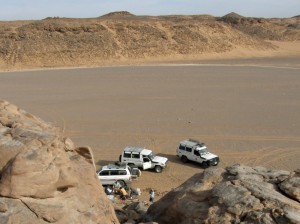
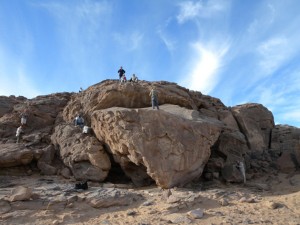
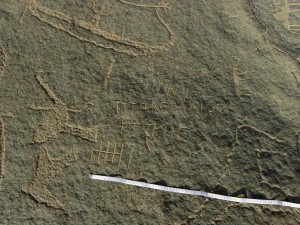


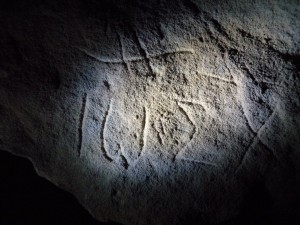
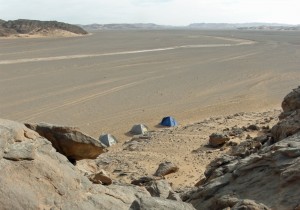
 By
By